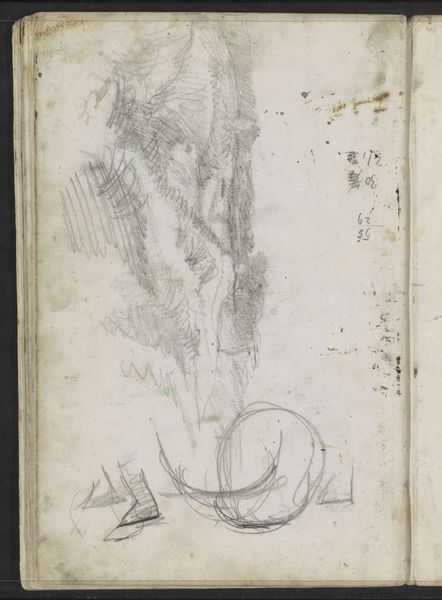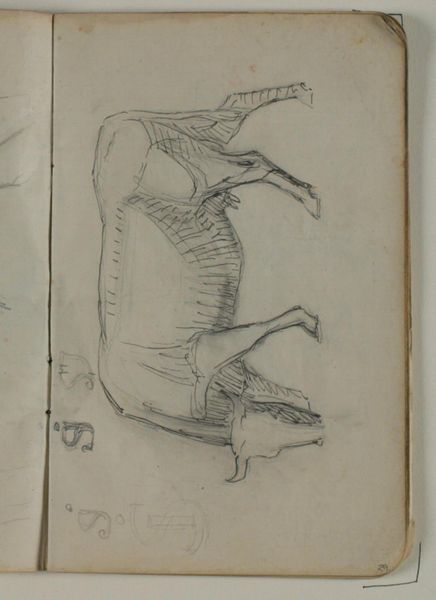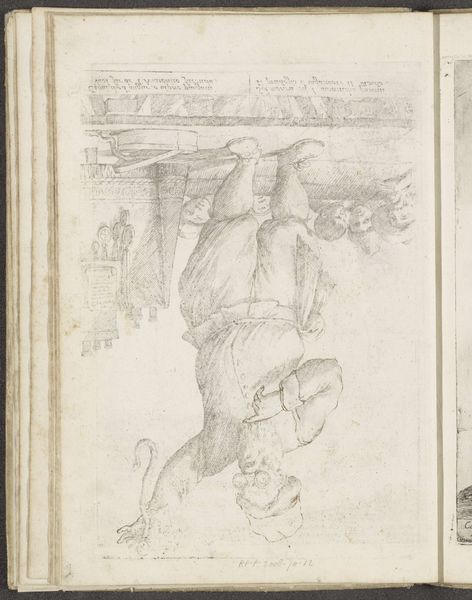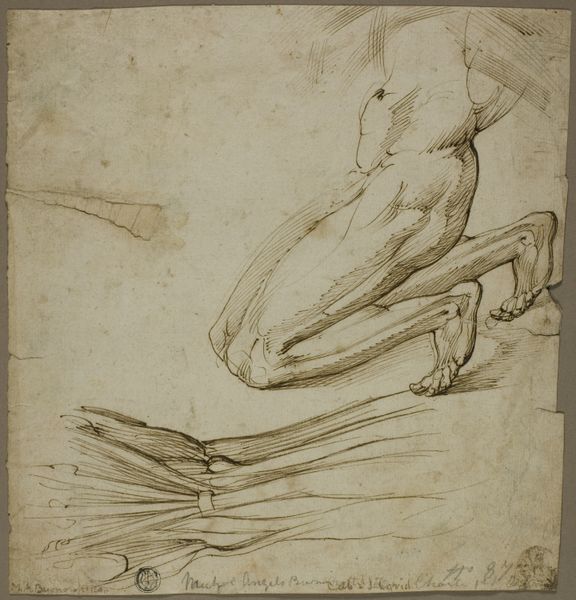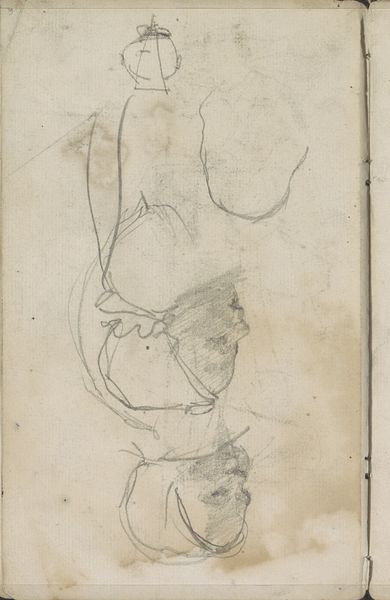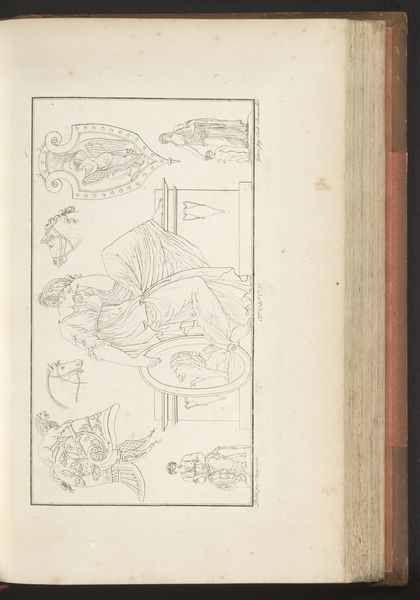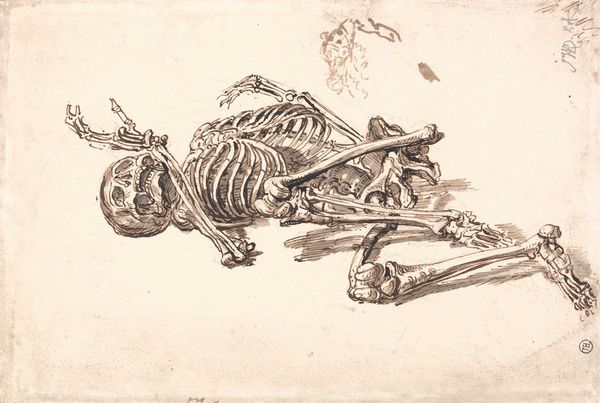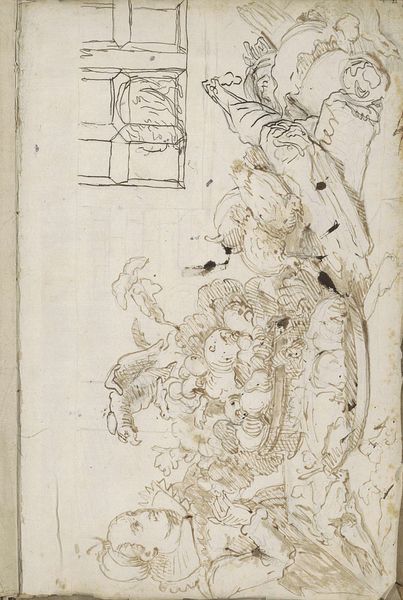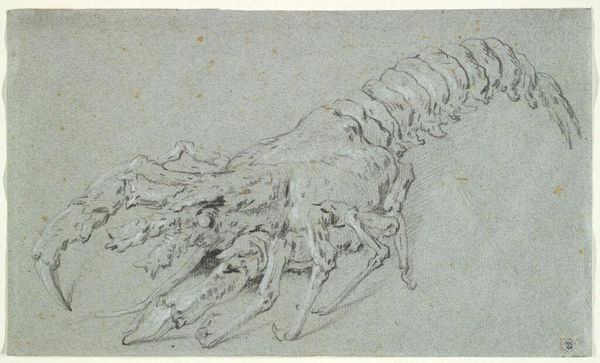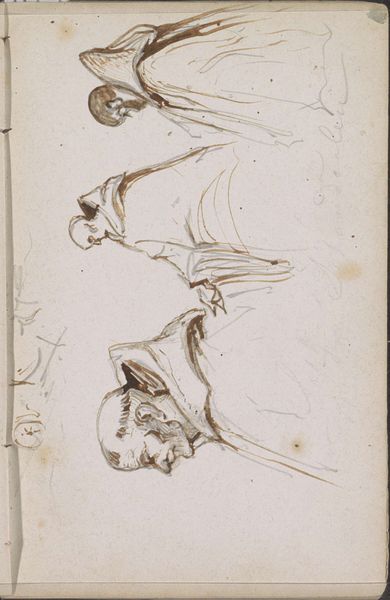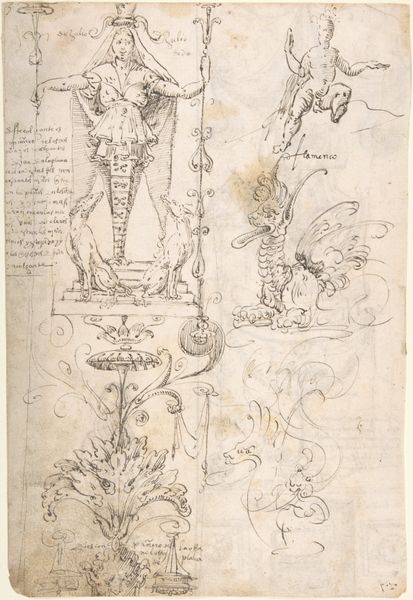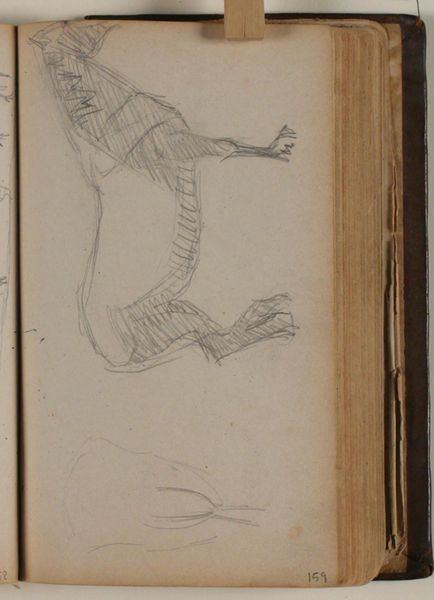
drawing, pencil
#
drawing
#
dutch-golden-age
#
pencil sketch
#
figuration
#
form
#
pencil
#
academic-art
Copyright: Rijks Museum: Open Domain
Editor: Here we have "Skeleton of a Dog," a pencil drawing by Cornelis Saftleven from 1666. There's something stark about it, yet the draftsmanship is so delicate. How do you interpret this work? Curator: Beyond the artist's skillful technique, consider the context. Seventeenth-century Dutch art often grappled with mortality, but representations of animals raise specific questions. This wasn't simply an anatomical study; it might reflect ideas about domestication, power dynamics, or even class. Dogs, for example, were often symbols of loyalty, but also subservience. What does it mean to depict this subservience as a fragile skeleton? Editor: That's fascinating! I hadn't considered the power dynamics inherent in the human-animal relationship. It feels almost like a commentary on the vulnerability of those in service. Curator: Exactly! And let's consider Saftleven's own position. As a member of the Dutch Golden Age art world, what socio-political forces were at play that influenced his gaze? The focus on anatomical precision alongside this potential commentary on societal hierarchy provides an interesting tension. Does the choice of a dog skeleton, rather than a more 'noble' animal, hint at something? Editor: It's definitely given me a lot to think about! I’d initially focused on the artistic skill, but you've made me realize that even a seemingly simple drawing can open up conversations about so much more. Curator: Precisely. Art is never created in a vacuum. Engaging with its social and historical backdrop is crucial to understanding its multi-layered meanings. Hopefully, this prompts us all to reconsider the power structures embedded within art and representation.
Comments
No comments
Be the first to comment and join the conversation on the ultimate creative platform.
